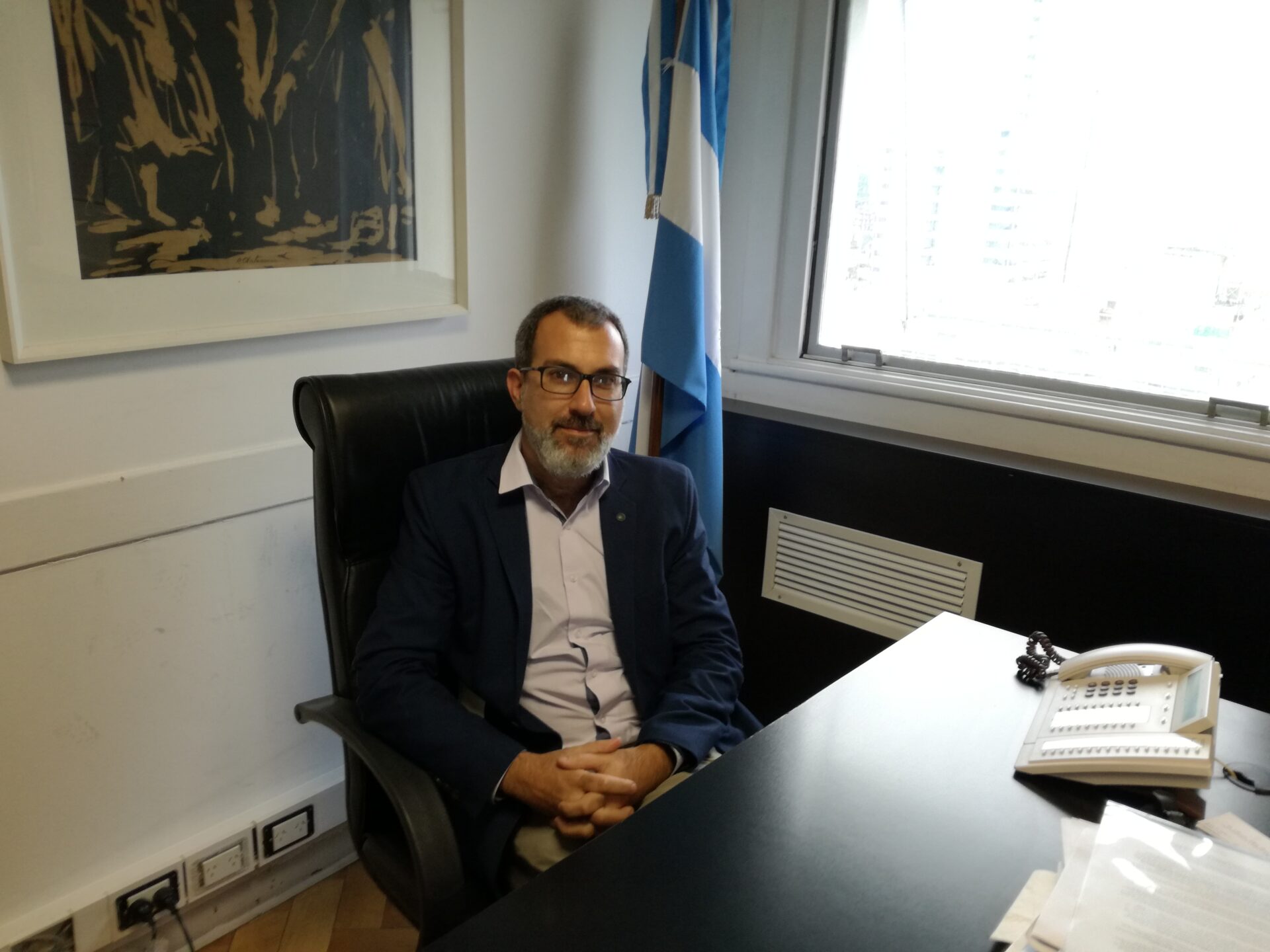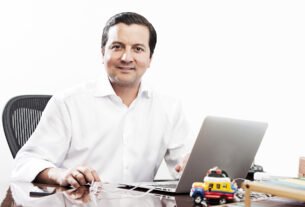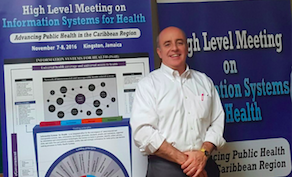Photo: Marcos Garcia, Vicepresident and General Manager for Spain and Latin America and Miriam Poves, Marketing Manager at Cerner Iberia and Latin America.
EHealth Reporter Latin America: What new products are Cerner presenting at Hospitalar and what are your projections for Latin America?
Marcos García: We want to contribute to improved administration of hospitals and healthcare in general with Cerner’s tools and solutions.
The company is American but has a major presence in Europe and Asia. Most of Cerner’s employees are located outside the United States. In Latin America, although we have a small number of clients at the moment, we can see that there is very great interest in our technology.
This is for two reasons: the first is that there are many globally prestigious hospitals in the region that know that to practice medicine one doesn’t just need the best X-Ray machine but also first class information technology systems. These clients are interested in achieving excellence.
Another interested sector in Latin America are healthcare organizations that realize that the system is unsustainable because of unlimited demand and limited resources. They want to use information technology to apply their resources where they can help the most. Our experiences in Europe, such as those in the United Kingdom and Spain, are very useful in this regard. On those two points we are seeing great interest from Latin America and we believe that we are going to be successful.
EHRLA: Is Cerner technology the same in every country?
MG: Our technology is adaptable. The software is the same for every country but it is a configurable system that can be adapted to the differences between different countries, especially with regard to billing and legislation. There are also other factors that can be different. We have invested 400 million dollars a year on developing new functions for our software and it is very difficult for a small local provider to compete with that kind of investment.
EHRLA: What support do you offer your clients?
MG: We have help centers in different countries that allow us to offer 24 hour assistance in all the languages that our clients speak. If, for example, a client in Chile has a very specific problem then they might have to speak to support staff in English, but we have a simultaneous translation system that makes it possible to ensure that our customers can communicate properly. In Latin America people are very interested in efficiency and excellence so we think that thanks to our experience and our ability to innovate the region could be a major market for us at this time.
EHRLA: Is it one of your current objectives to focus on the Latin American market?
MG: Yes, that’s why we’re at Hospitalar. We have information from our clients that shows that our technology can save lives and help to provide healthcare services more efficiently. At Hospitalar we are sharing this information with those who are scared of spending a lot of money on technology without seeing any results. For example, when nurses take the patient’s temperature and other vital signs, they don’t have to write them down or enter them into a computer, as the monitor will send the results directly to the heath record. This makes it possible to save five minutes per patient and, once the costs are calculated, the return on investment can be seen very clearly.
EHRLA: What other projects are being planned for the region?
MG: We are currently trying to close a deal with our first Brazilian client which I think is important because it’s a new shop window in a new language.
EHRLA: Is language a barrier?
MG: We want to eliminate any possible reason that our technologies would be unable to adapt. The software is being translated into Portuguese and we have invested enough to allow us to work in any country in South America, as it now exists in Spanish, English and French.
EHRLA: How do you deal with the cultural changes that institutions need to make to implement the systems?
MG: We work in partnership with each organization to ensure that the technology never becomes an obstacle to practicing medicine. We have a systems implementation methodology that includes a series of events that we recommend should involve clinics because the doctors need to experience for themselves the benefits that the systems can provide. They will only be interested in the project, if they feel that it is a system that will help them to take decisions. At heart the doctor wants the system to help them do their work and so it is very important that professionals experience the benefits.
EHRLA: What attracts Cerner to the Brazilian healthcare market?
MG: In my opinion, the Brazilian healthcare market has three well-differentiated segments: there is the prestige hospital market, such as the Albert Einstein hospital, which is similar to our North American clients. There is a second group of potential clients such as Unimed and Amil, who are insurers and are interested in managing all their associates. The third objective would be the public system which would be a more complex client for us due to its size, but there is a lot of room for improvement there. Most of the country’s inhabitants depend on the public system and that is where there is a lot of potential for improvement. Brazil is a strong economy that is still growing and has the opportunity to learn lessons from Europe and the United States.
EHRLA: Does Cerner have plans to expand into other countries?
MG: We have clients in Chile and Mexico and now we are seeking our first client in Brazil. We are open to other countries such as Colombia and Peru. We already have a presence in 24 countries and our objective is to continue with our expansion.
EHRLA: What are the main obstacles to doing business in the region?
MG: Sometimes there is mistrust with regard to suppliers from other countries and that, historically in the software world, is the most problematic factor because we are always obliged to demonstrate the value of what we offer. This is why having clients across the world is an advantage. With software many managers want to control it more themselves so what we do when we arrive in a country is create an affiliate with a Cerner team in that country so that they can work directly with the client. We want the client, if there’s a problem, to be able to speak directly to us and not an intermediate.
EHRLA: How much time does it take to implement a system from the moment the contract is signed to when it’s up and running?
MG: To automatize an entire hospital, it takes approximately fourteen months. There are those who might think that that’s a long time but what we are doing is working with the client on the transformation, taking into account their own working processes; for that reason we are convinced that the time is necessary. The system might be finished in just six months and if the client thinks that they can keep up the same pace as it is implemented then fine, but it’s not advisable; these are complex changes that take time.
EHRLA: How do you regard the competition in the region?
MG: We don’t have many competitors and that’s true of all the countries we have a presence in. In the United States we have a few competitors that don’t have a presence outside that market.
In Europe there are Siemens and diagnostics companies who are suddenly getting into software, and some local companies in Latin America and Spain. But we are the information technology company with the largest number of clients in the world.



